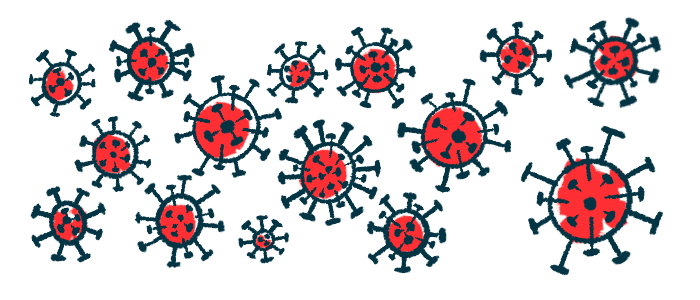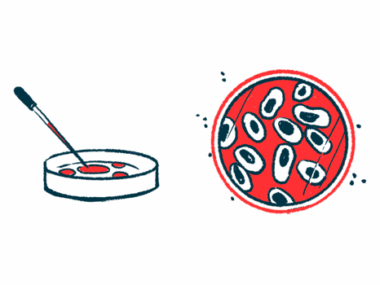CF lung cells show unique responses to COVID-19, flu viruses
CF cells less susceptible to SARS-CoV-2, study finds
Written by |

Cells from the lungs of people with cystic fibrosis (CF) are less susceptible to infection by SARS-CoV-2, the COVID-19-causing virus, than those of people with other lung diseases, but they respond similarly to the influenza A virus, a study found.
Restoring function to CFTR, the protein that’s faulty or missing in CF, didn’t increase infection by SARS-CoV-2, suggesting CFTR is not directly involved in how well the virus multiplies within cells. Understanding how viruses infect cells may lead to better treatments for viral infections.
The study, “Distinct Responses of Cystic Fibrosis Epithelial Cells to SARS-CoV-2 and Influenza A Virus,” was published in the American Journal of Respiratory Cell and Molecular Biology by a team of researchers in Italy.
In CF, thick and sticky mucus builds up in the airways, providing a breeding ground where bacteria and other microorganisms such as viruses can grow and thrive. This mucus also blocks the airways, making it difficult for the body to clear up infections on its own.
Infections can worsen respiratory difficulties and other symptoms of CF, but how well different viruses infect and multiply within cells is unclear. And quickly appearing mutations can make a virus’ variant more infectious and easier to spread from one person to another.
CF lung cells less likely to help SARS-CoV-2
The researchers collected bronchial epithelial cells, which are cells that line the airways, from nine people with CF, including six who carried one or two copies of F508del, the most common CF-causing mutation. Cells from nine people with other lung diseases served as controls.
When grown in the lab, bronchial epithelial cells from people with CF were less likely to help SARS-CoV-2 replicate, or produce new viruses, than non-CF cells, regardless of the virus’ variant or type of CF-causing mutation.
In contrast, bronchial epithelial cells from people with CF and those without CF were equally efficient in supporting the replication of both seasonal and pandemic influenza A virus (H1N1) variants. A pandemic is when a new disease or new strain of an existing disease spreads worldwide.
The lower ability of SARS-CoV-2 to replicate in CF wasn’t related to the levels of ACE2 receptor, which the virus normally uses to enter cells, or to CFTR protein function. In fact, when cells carrying two copies of F508del were treated with elexacaftor, tezacaftor, and ivacaftor — the active ingredients in Trikafta — to restore CFTR function, replication didn’t change.
After infection with SARS-CoV-2, bronchial epithelial cells from CF patients showed different immune responses from cells of non-CF people. This suggests that people with CF may respond differently to viral infections, affecting how their immune systems react to harmful microorganisms.
“This research offers a new perspective on CF and viral interactions, emphasizing the need for further investigation into the mechanisms underlying these differences,” the researchers wrote.







